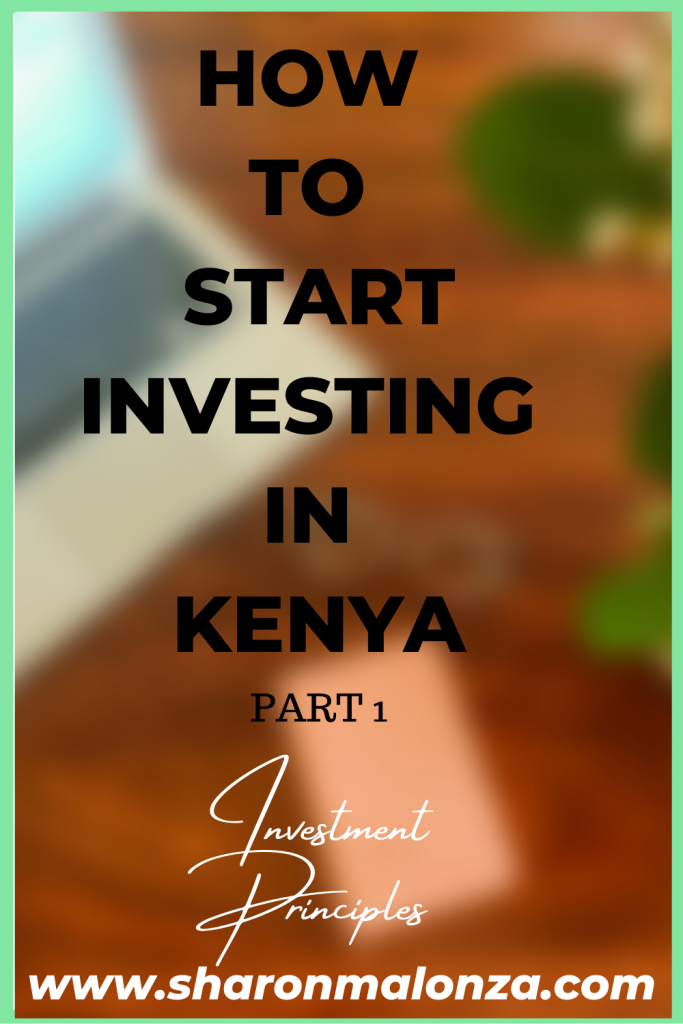Before you begin investing in Kenya, there are a few things to consider. In this post, I share some tips on how to approach investing.
There are several factors that determine how you approach investing. I divided these into understanding yourself as an investor then understanding the investment opportunities available.
Table of Contents
SELF ASSESSMENT
Personal goals
I approach investing based on my personal goals.
Ask yourself a few questions.
- Where do I seem myself in the next couple of years?
- Am I making any big changes in my life such as advancing in education, changing career paths, getting married, having children or retiring?
Many life decisions have a cost attached to them. It’s always best to think short, medium and long-term when answering these questions.
Understanding your personal goals will lead you to the next point.
Why are you investing?
The 3 categories are:
- Capital preservation: the investment amount is protected.
- Moderate growth and security: this is a balanced investment approach with medium risk to it.
- Huge capital gains: this may involve riskier investments with significant returns.
Companies often create unit trusts based on these 3 categories.
Risk Appetite, capacity and tolerance
Risk appetite
Are you willing to take financial risks?
The best way to answer this question is to imagine how you would react to a 20% drop in your investment value overnight.
If you’d want to pull out of the investment, you probably have a low risk tolerance. If you are comfortable with extreme fluctuations in investment value, then you probably have a higher risk appetite.
Risk capacity
This is where factors like your age and income come to play.
You may have a high risk appetite but you’re nearing retirement which means it’s best to have a lower risk portfolio that preserves the capital and guarantees steady cashflow.
You may also have a high risk appetite but you don’t earn enough to dabble in riskier investments.
There are rules that can be beneficial but definitely aren’t one size fits all.
The 100 Rule
One popular rule is the 100 rule . You take 100 minus your current age.
The number you get is the percentage you would allocate to higher risk investments while your age is what you would put to lower risk investments.
e.g if you are 30 years old, 30% of your portfolio will be in lower risk investments while 70% can be in higher risk investments.
The idea here is that younger people can afford to take greater risks because time tends to balance out their returns especially on equities like stocks. Someone closer to retirement might not be putting in as much into stocks or alternative investments that might not bring them the return they need urgently/short term.
However, this might not be true for everyone. There are twenty year olds with low risk appetites and 50 year olds with higher risk appetites.
Risk tolerance
What is your risk limit? How much can you allocate into riskier investments versus “safer” investments. Remember all investments carry some risk.
For this question, consider working with percentages. For example, allocating no more than 10% of your income into risky alternative investments.
Investment horizon
How long are you planning to have this investment? Another way to phrase this is, when would you want this money back?
- Short-term: 0-3 years
- medium term :3-10 years
- long term: over 10+ years
Understanding your investment
It’s one thing to know about your values as an investor. The next step is to understand what you are investing into.
Theory
Do you understand how this investment works? Can you comfortably explain to yourself and to others?
Do not invest in what you don’t understand. Do not be afraid to consult unbiased financial experts and do your own research before jumping into it blindly.
Liquidity of the investment
Liquidity is the ease of converting an asset into cash. If liquidity matters to you, this can help you narrow down your investment options.
For example, a house is an illiquid asset whereas a money market fund is a liquid investment option.
rate of return on investment
Different investments have various percentage returns. More often than not, a higher return has a higher risk attached to it.
When choosing the right opportunity, make sure you know what the interest or profit looks like.
Investment Fees
Most, if not all, investments have some management fees. You also have to think about taxes and any transactional costs.
Make sure you confirm the net return/interest once these fees are paid.
Pro investment tips
- Build an emergency fund. This is a great source of security that can give you more wiggle room when making riskier investments.
- Invest money you are willing to lose. There is no investment that has zero risk.
- Invest in only what you understand.
In the next investing video, I will share a resource that goes into the specific investment opportunities that are available here in Kenya.
What are some of your investment principles? Leave them in the comments.
Thank you for stopping by!
“Always remember that your hair is your crown and your body is a temple; embrace it, love it and take care of it.”

